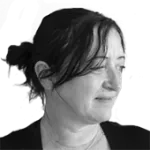Quantum computing set to shake up cybersecurity
Understanding how two quantum particles interact with each other is advancing quantum computing. This groundbreaking research in quantum mechanics won the 2022 Nobel Prize for Physics. It is pushing the boundaries of quantum computing, quantum networks and security using quantum cryptography.
The experiments conducted by scientists Alain Aspect, John Clauser and Anton Zeilinger look at quantum entanglement, the foundation of quantum computing. An entangled quantum state is where two quantum particles link together as a single unit and maintain their relationship, no matter how far apart they are. If a change happens in one particle, it will occur in the other.
Modifying the view of what quantum is capable of
Quantum technology opens a world of computing capabilities. In cybersecurity it can generate high-level encryption, making it unbreakable. But its computing power also gives it the potential to decrypt the RSA public-key algorithm, which would create havoc in today’s security infrastructure.
Quantum computers can process complex algorithms and break codes quickly and effortlessly. As well as bringing with them great potential to solve complex problems such as predicting climate change, they also pose a major threat to cryptographic solutions used in cybersecurity. As such, governments and industries will have to face both a challenge and an opportunity head-on.
Researchers at the University of Oxford, with contributions from the University of Geneva, the Swiss Federal Institute of Technology in Zürich, and the French Alternative Energies and Atomic Energy Commission have already experimented with implementing a quantum key distribution (QKD) protocol using quantum entanglement.
QKD is a way of exchanging encryption keys using methods found in quantum physics to swap cryptographic keys that ensures they have not been tampered with and are secure. This is done by transmitting photons or light particles across fiber-dedicated optic cables from one body to another.
Creating quantum-resistant algorithms
Governments are preparing themselves to address threats and opportunities presented by quantum computing. At the end of last year, U.S. President Biden signed the Quantum Computing Cybersecurity Preparedness Act. The regulation will require the U.S. Office of Management and Budget to prioritize post-quantum cryptography for federal agencies acquiring or migrating technologies.
The National Institute of Standards and Technology (NIST) in the U.S. has already chosen the first group of encryption tools designed to withstand attack by a future quantum computer. The four selected encryption algorithms will become part of NIST’s post-quantum cryptographic standard, which is expected to be finalized in about two years.
“Our post-quantum cryptography program has leveraged the top minds in cryptography — worldwide — to produce this first group of quantum-resistant algorithms that will lead to a standard and significantly increase the security of our digital information,” explains Laurie E. Lorcascio, Under Secretary of Commerce for Standards and Technology and NIST Director.
In addition, NIST recently increased the industry standard for key length protocol from 128 bits to 256 bits to shore up security in preparation for quantum computing.
In Europe, the EU Agency for Cybersecurity (ENISA) has published a report highlighting the necessity to design new cryptographic protocols and integrate post-quantum solutions into existing protocols as soon as possible.
Aside from NIST, other organizations have set up work groups to look at protocols and standards, including the European Telecommunications Standards Institute (ETSI). However, the ENISA Post Quantum Cryptography Integration study maintains that moving to quantum-resistant cryptographic algorithms will take some time due to complex processes and financial implications.
While ENISA acknowledges the lead taken by NIST in its bid to standardize cryptographic systems, it recommends that governments, organizations, industries and standards bodies ensure they get an overarching understanding of post-quantum cryptography before making any significant decisions on direction.
Commercial systems that use quantum communication for key exchanges using QKD already exist but are hugely expensive. “It costs hundreds of thousands of euros to secure just one chain between a transmitter and a receiver,” explained Eric Hardouin, VP Ambient Connectivity Research at Orange, in an interview at Hello Future 2022. This does not make it a viable solution at the moment for most.
Orange is exploring quantum security
Orange is running experiments into the capabilities of quantum, while preparing more robust security mechanisms to secure systems against quantum threats. This includes post-quantum cryptography, which defines cryptographic solutions that will be strong enough against the computing capacities of quantum. In addition, Orange is also working on the unique properties of quantum physics to co-construct encryption keys to flag up if communications have been compromised.
It has already demonstrated encrypted video streaming running over its fiber network using QKD. It is part of a project funded by the Ile-de-France region of North Central France and led by Orange. Orange used the QKD system created through Thales ID Quantique and IPsec Mistral encryption gateways through collaboration with Sorbonne University.
Get ready for quantum computing
Quantum computing is already on the radar of organizations. Gartner said that inquiries about demystifying quantum computing have doubled in the past couple of years, with 20% coming directly from CIOs.
Gartner recommends that organizations prioritize use cases, such as security, and focus on skills development when selecting quantum computing partners and putting together work groups to look at value capture. “Quantum computing is complex and can’t be turned on overnight. Starting early is the surest form of success for CIOs on their quantum journey,” explains Chirag Dekate, VP Analyst at Gartner.
To learn more about how quantum computing is pushing the limits of computing and how Orange addresses the cryptographic challenge, click here.

Jan Howells
Jan has been writing about technology for over 22 years for magazines and web sites, including ComputerActive, IQ magazine and Signum. She has been a business correspondent on ComputerWorld in Sydney and covered the channel for Ziff-Davis in New York.